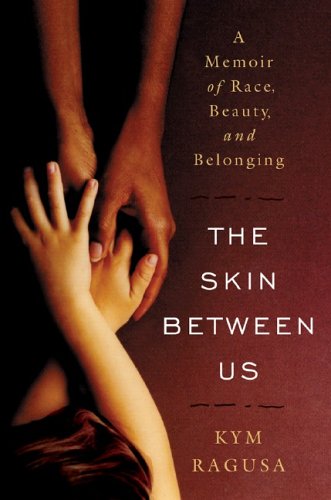Genere: racconti
Paese: Italia
"Tabaccherie Orientali", di Clara Nubile, LAB, collana "Gli Ulivi", € 11
E' bastato un commento al blog di Silvia a scatenare un'emozionante momento serendipico, che coinvolgeva la poetessa indiano-americana Meena Alexander, la giovane scrittrice pachistana Kamila Shamsie e il poeta kashmiro-americano Agha Shahid Ali, quest'ultimo a formare da cuscino naturale, per una volta smilitarizzato, tra le due. E' così che sono arrivata a conoscere questo libro emozionante, i cui momenti lirici non rovinano il tessuto del racconto.
"Ai miei studenti d'America dicevo sempre, prendete le vostre parole, quelle parole che avevo scritto con caparbia e presunzione, con impeto e pietà. Prendete le vostre parole e mettetele spalle al muro, poi spogliatele. E sparate, senza pensarci nemmeno un attimo. Gonfiatele di proiettili, dilaniatele, riempitele di piombo. Infine raccogliete i resti, i cadaveri ancora palpitanti delle vostre parole e avvolgetele in un sudario. Di notte, cullatele. Vegliate sulle vostre parole sbrindellate. Fate la veglia funebre alle vostre parole, ai vostri romanzi, alle poesie, ai racconti, ai passaggi, alle lettere. E al terzo giorno resusciteranno, senza le vostre mani. Da sole le parole si alzeranno dal sepolcro di carta e si incammineranno per strada, investite di luce vergine, libere da rimorsi e somiglianze. Forse a quel punto potrete anche pensare di avere scritto due versi, due righe degne di essere lette." (p.42)
 |
| Agha Shahid Ali |
A parlare così è Agha Shahid Ali, poeta kashmiro-americano purtroppo non ancora tradotto in Italia (se non per sporadiche poesie in qualche antologia), che è anche uno dei personaggi di questa raccolta di racconti, sospesi tra l'India, il Salento e una manciata di altri luoghi del globo. In ogni storia a parlare è un personaggio realmente vissuto: poeti, attivisti e viaggiatori, ma anche boss della mala, narcotrafficanti e banditesse indiane. Non unicamente modelli da imitare, o persone da riverire, quindi, ma anche criminali o gente dalla vita travagliata, la cui umanità palese è rappresentata dalle pantofole di Topolino che indossava Pablo Escobar, il più potente narcotrafficante che la Colombia abbia mai conosciuto, al suo funerale. Il mio racconto preferito, tra i dieci proposti, è forse proprio quello dedicato al poeta che viene da un paese in cui non ci sono più gli uffici postali, che poi sarebbe appunto quella vallata dove "creano desolazione e la chiamano pace", il Kashmir.
Quando deve imbucare una lettera, lui che come tanti altri scrittori vive in esilio, deve per forza decidere se comprare un francobollo per l'India o per il Pakistan. Ma come può decidere? Un francobollo per il Kashmir non esiste, com'è tristemente noto. Il bello di questo racconto è la rielaborazione dei versi del poeta, che funzionano per accumulazione ed associazione, mentre i racconti normalmente scorrono perché c'è un filo narrativo e la stessa noiosa logica che riempie le nostre giornate. Ma la poesia contemporanea - e quella di Agha Shahid Ali in modo particolare - è come un sogno, così capita di arrivare in ritardo di dieci anni ad uno spettacolo al cinema, oppure di passeggiare per le strade della vecchia Delhi completamente deserte. Ricordi ed immagini forgiate dall'esilio, dalla nostalgia, dalle migrazioni.
 |
| La banditessa Phoolan Devi |
Ma non è lui l'unico personaggio dall'esistenza tormentata: c'è la dacoit e parlamentare indiana Phoolan Devi, che parla nello stesso linguaggio sboccato del film biografico "Bandit Queen", e la cantante di ghazal Begum Akhtar, che saliva sul palco con una fiaschetta di whisky e con la sigaretta perennemente in bocca. Ci sono anche personaggi nati in Occidente che però, come l'autrice, avevano il prurito sotto i piedi e hanno girato il mondo: Bruce Chatwin, l'indimenticabile autore de "Le Vie dei Canti", o Mildred Cable, missionaria inglese che si è spinta fino in Cina. Quest'ultima accompagna l'io narrante del racconto "La notte che scoprii di essere Mildred Cable". Ogni tanto infatti spunta questo personaggio, presumibilmente autobiografico: una ragazza che sta viaggiando per l'India e si trova allo stesso tempo spaesata ed estasiata dal nuovo paese che sta imparando a conoscere e ad amare. Nel primo di questi racconti, "Persino il cielo è diventato verde", vengono evocati i canali del Kerala, a quanto mi dicono non dissimili da quelli veneziani che conosco bene, e le verdissime risaie, anch'esse paragonabili a quelle della pianura padana, poi di nuovo le montagne del Kashmir, regione che Hans vuole visitare a tutti i costi nonostante il conflitto, inseguendo una leggenda che sarà per lui una maledizione. Incapsulato di nuovo da un verso di Agha Shahid Ali ("separation can't be borne / when the rains come"), questo racconto è infatti dedicato a Hans Christian Ostro, viaggiatore e danzatore norvegese che è stato ucciso in Kashmir. La morte e la malattia è un po' un fantasma in questi racconti che sprizzano voglia di vivere ma dove la morte è appunto o inaspettata oppure giunge in modi raccapriccianti, come nel caso del virus misterioso che ha stroncato la vita straordinaria, sempre sulla cresta dell'avventura, dello scrittore di viaggio inglese Bruce Chatwin. Infarciti di versi di poesie e di citazioni, che alle volte travalicano le dimensioni del tempo e dello spazio, come quando Begum Akhtar cita una canzone di Vinicio Capossela, questa raccolta di racconti che non supera le ottanta pagine è una bella ventata di aria fresca nel mercato stantio della letteratura italiana.
Sull'autrice: Clara Nubile è nata a Brindisi, nel 1974. Nel 2001 è partita per Bombay, dove ha fatto la ricercatrice, ma ha vissuto anche ad Antwerp, in Belgio, e a Ravenna. E' traduttrice e scrittrice. Ha pubblicato "Io ti Attacco nel Sangue" (Fazi, 2005) e "Lupo" (Fazi, 2007). La trovate anche nel blog di Tabaccherie Orientali.










